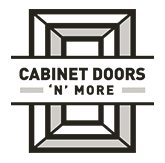
When you buy new cabinet doors or outfit your home's floors with hardwood, you might start noticing changes in their color. Though you might think you're seeing things, your eyes aren't lying to you. Most homeowners don't realize this, but wood changes its color over time. Before you purchase any wood for your home, you can ensure you get the color you want by being aware of the ways different wood species tend to evolve and why this change occurs in the first place.
Find out more about why wood's color changes over time and some tips for dealing with this.
WHY DOES WOOD COLOR CHANGE?
Wood consists of cells ranging from 1/8 to1/4 inches long and featuring a diameter of around 1/100 of the cell's length. These cells feature various chemicals, which differ a great deal between species of trees. When you want to understand why wood's color changes, you should know the chemicals inside wood cells have a specific color.
Since a living tree's wood cells have no exposure to light or oxygen, oxidization barely occurs, if it occurs at all. After a tree gets cut down and its logs become lumber, the wood will oxidize and change colors. The wood's species and its amount of exposure to UV light and air will determine the speed of the color change.
Sometimes, you might notice a wood's color change from the moment a logger cuts down the tree to when the finished lumber reaches a customer. Even after trees become wooden cabinet doors and drawer fronts, wood continues to change within its environment, expanding and contracting with changes in humidity and sunlight.
Remember, color changes in wood tend to be the most dramatic in the first year. Wood will change color faster in direct sunlight or without any finish on it to slow oxidization. Most of today's applied finishes can slow the changes but won't halt the oxidation process.
Typically, wood's color changes only go a few hundredths of an inch deep. As a result, you can sand the wood to reveal a different color even after a great deal of change has occurred on the surface.
HOW DOES UV LIGHT EXPOSURE AFFECT WOOD COLOR CHANGE?
Wood is photosensitive, meaning it will react to direct sunlight even when it's out in nature. Wood's primary reaction to ultraviolet light is to change colors with prolonged exposure. Just as your skin will tan or darken when you spend a long time outside, wood changes in color due to sun or artificial UV light exposure.

Besides the initial color change, UV light can also cause the wood's finish to change with regular exposure.
HOW DOES WATER AFFECT WOOD COLOR CHANGE?
While UV light exposure is an unpreventable part of any wood's experience, you can control your wood's exposure to water. Once your wood is dry, you'll want to avoid getting it wet. When water evaporates on wood, it will cause water-soluble chemicals to move up to the surface. These chemicals will then discolor the wood.
Besides the water-soluble chemicals' effect on the wood, water with traces of iron can result in further discoloration. Since the wood's tannic acid will react to the water's iron, it will form into iron tannate. This substance usually has a blue-black color, but it can also have a gray appearance. Since you likely don't want your wood to discolor in this way, it's critical to avoid allowing water to seep into your wood.
HOW DOES HEAT AFFECT WOOD COLOR CHANGE?
Woods with a higher moisture content tend to be more vulnerable to heat exposure, but prolonged heat can affect many kinds of wood species, even if they have less moisture. If dry wood is subject to temperatures exceeding 150 degrees Fahrenheit, the wood will begin to darken. With prolonged exposure to temperatures exceeding 200 degrees Fahrenheit, dry wood can turn black and look like charcoal.
HOW DO DIFFERENT WOODS CHANGE IN COLOR?
Darker woods like cherry and mahogany typically show the most dramatic amount of color change. Many lighter-colored kinds of wood, such as oak and maple, are prone to be a little more color-fast as well. As you search for the perfect wood for a new piece of furniture or cabinet doors, you'll likely want to know how some of the most popular types of wood will change in color.
-
Cherry: While you might think of cherry wood as having a reddish-brown color, freshly cut cherry starts with a much lighter appearance. After a few weeks, cherry wood will begin to change into a brown-red color. However, the most striking rich dark red hue that many people love will take about six months to a year to fully develop.
-
Maple: Maple starts with a light and bright brown color featuring gray and pink tones. With age and exposure to light and oxygen, it will take on a golden honey color, giving off a warm appearance.
-
Walnut: Unlike cherry and maple, walnut wood will get lighter as it ages instead of getting darker. While walnut starts with a dark brown appearance, its look will shift to a rich honey color, with this color coming out of its grain.
-
Red oak: When you first cut red oak, it will usually have a lighter pink and tan color. As the wood evolves, these colors will take on a more amber color, giving the oak a darker hue.
TIPS FOR DEALING WITH COLOR CHANGES IN WOOD
When you're hoping to add new cabinet doors or buy a new set of furniture, you can maximize your selected wood by following a few main tips. For example, you can move wood products away from direct sunlight if you want to slow color change, or you can ensure your wood isn't close to heat sources. Having these tips in your corner lets you maximize new wood and ensure it looks its best.
Review the main tips for dealing with color changes in wood below.
-
Use a finish but know it only delays the inevitable: While adding finishes can help slow a wood's oxidation, it won't stop it entirely. Over time, the wood's color will change no matter what finish you use. If you have your heart set on finishing your wood to slow color change, you'll want to use multiple coats of finish and select a film-building finish.
-
Move items away from direct sunlight:If you want to slow color change, it helps to move wood items away from direct sunlight.However, with kitchen cabinets or flooring, you can't do much to protect them from sunlight exposure after installation. Since cabinets and flooring will change color, it's critical to know what color the wood will eventually evolve into to ensure it matches your aesthetic.

-
Avoid shadowing: Shadowing occurs when an object, such as a desk lamp, consistently rests on one part of a piece of furniture and leaves the remaining wood exposed. Since the object will block light from reaching the wood underneath, it can leave a spot that appears lighter or darker than the wood surrounding it. If you want your wood to maintain a consistent appearance, it's critical not to leave objects resting in one place for very long.
-
Keep wood away from direct heat sources: Since heat can make wood darker, you can prevent this change from occurring by keeping wood away from your direct or localized heat sources. If you don't want to speed up the darkening process, avoid placing your wood products near baseboard heaters, ovens and heat lamps.
-
Prepare for the change: Since you're fighting a losing battle if you want to stop wood from changing color, it's often best to accept the change. Before you invest in any type of wood, you can ensure you won't be disappointed by researching how it will evolve. After you know what color it will eventually turn into, you can ensure it will fit the aesthetics of the room where you'll place the wood.
-
Buy wood for how it will look, not how it looks now: Like preparing for change, you'll likely want to go into the buying process trying to find wood that will develop into a color you desire. While a maple cabinet door might be a little too light for your tastes now, it will darken over time, making it a perfect addition to your current decor. By buying for the future, you'll invest in wood that will be with you for the long haul.
-
Use a dye if you want the color to pop: Dyes are an excellent option for making wood products stand out and avoiding color change. By dyeing your wood, you'll have the chance to choose the exact color you want it to be, and you won't have to worry about the dye changing colors. Dyeing your wood can give your furniture or cabinet doors a colorful pop that you'll love to see every day.
HOW CABINET DOORS 'N' MORE CAN HELP YOU PICK THE PERFECT KITCHEN CABINET DOORS AND DRAWER FRONTS
If you're planning to update your kitchen cabinet doors, you might worry about the struggle of matching an older or existing cabinet door with a new one. Since older cabinet doors will have already gone through most of their color change, newer ones will usually have a different appearance.

At Cabinet Doors 'N' More, we understand how challenging it can be to match new cabinet doors or drawer fronts with existing ones. As a result, we only offer unfinished solid wood and MDF cabinet doors and drawer fronts. By providing our products unfinished, we believe you have a better chance to match an older cabinet door that has changed over time with a stain, varnish or paint that pairs perfectly with the new cabinet door.
Besides using paint, varnish or staining products, you can use sunlight on new cabinet doors for a brief period to help them change to their final color faster and match your existing doors. Keep in mind that, as a general rule, light woods will darken, and dark woods will lighten with exposure.
As explained previously, various wood species react differently to environmental changes. One of the trickiest parts of woodworking is the range of colors you can find within a single species like cherry and maple.
Since wood has some variance in its color change, you'll want to work with a team that can provide you with the best unfinished cabinet doors on the market today. Since our team of experts can help you select the perfect type of wood for your cabinet doors, drawer fronts and drawer boxes, you can maintain a room's great look. Once you've found the perfect product for your needs, the ordering process is easy and fast.
TURN TO CABINET DOORS 'N' MORE FOR YOUR CABINET DOOR AND DRAWER FRONT NEEDS
For new, replacement cabinetdoors, drawerfronts, drawerboxes and all your cabinet remodeling needs, turn to the leader in the online kitchen cabinetry industry – Cabinet Doors ‘N’ More. You can order as little as one cabinet door front for a quick repair or many cabinet components for a large-scale project. Whatever you need, we have the custom, high-quality replacement cabinet components you can count on for your DIY project. Click through our extensive collection, and start our easy-to-use ordering process today!
If you buy $750 or more in any combination of cabinet doors, drawer fronts, drawer boxes or accessories, you'll even receive 10% off your entire order. Whenever you have any questions, please feel free to contact us or review our guide about how to order.

Learn More About Cabinet Cleaning & Care







